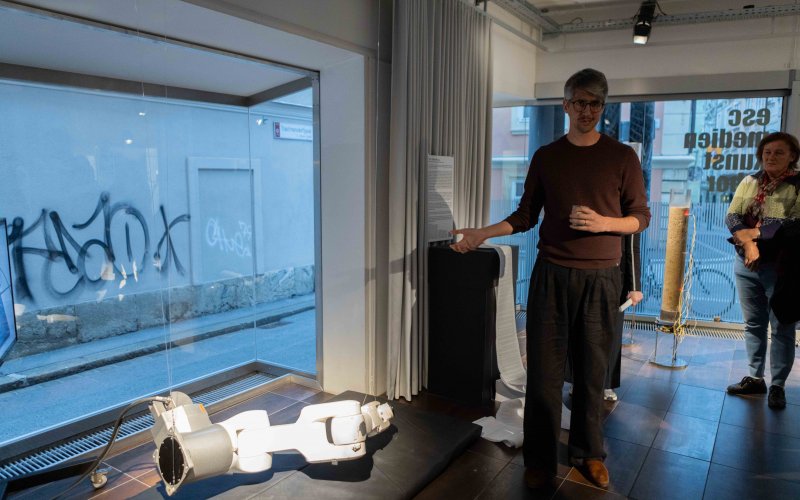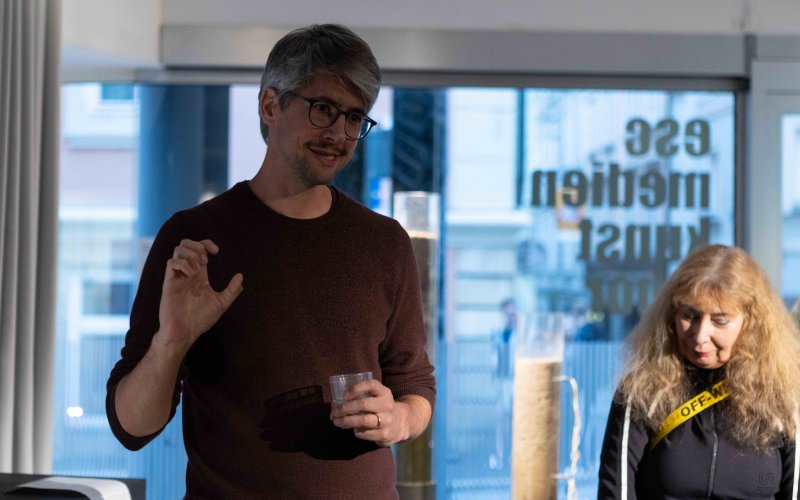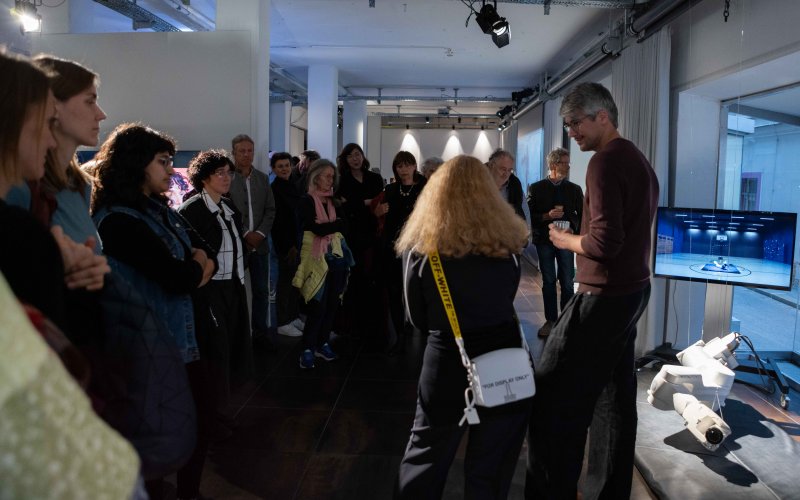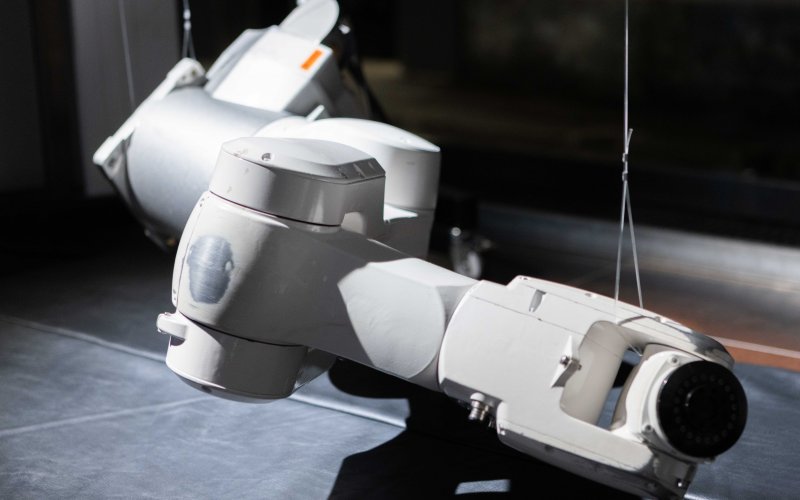disarming II
Termine:
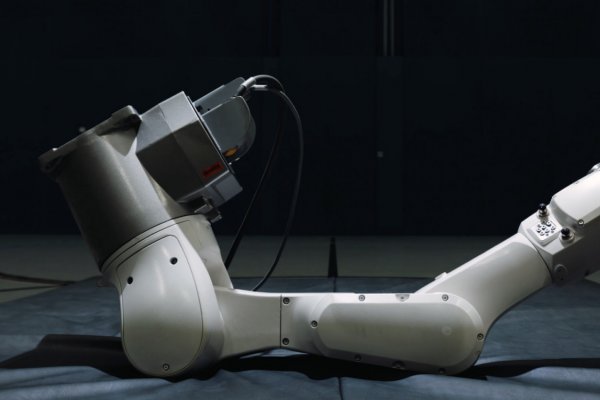
disarming II confronts visitors with the learning progress of a robotic arm placed freely on a gym mat in its effort to move away from the spot, and the anthropomorphization of this “intention.”
Movement can be seen as a primal (postnatal) instinct and the ultimate act of independence. A robotic limb, detached from a human-constructed technological body, attempts to find concepts for locomotion, even though it was not originally created for autonomy—and in doing so appears both vulnerable and determined. Parallel to the familiar dystopian narrative of technological autonomy and the feelings associated with it, witnessing these first clumsy attempts can evoke compassion or even a certain emotional attachment.
For centuries, the ability to move independently was considered a key criterion for autonomy. At one point, it was even considered a defining characteristic of liveliness. Although our definitions of autonomy and liveliness have evolved, our tendency to anthropomorphize has remained. disarming II takes up the industry narrative that robots are becoming increasingly autonomous with the help of machine learning. In doing so, learning is stretched and robbed of its efficiency, creating a situation that invites us to observe our own projections, as well as the multitude of relationships between the entities involved in their emergence and transformation.
Link:
Kooperationen/Team:
Core team: Emanuel Gollob – research, concept & production; Advice and support: Markus Krampl – video documentation, Amir Bastan – real-time robot control, Magdalena May – scenography, Creative Robotics – robotic hardware support, WRO ART Center team – curatorial and organizational support; Hardware | KUKA industrial robot arm | Mini PC | gym mat; Software | Reinforcement Learning | vvvv gamma | bunraku.xyz | Robot Sensor Interface

